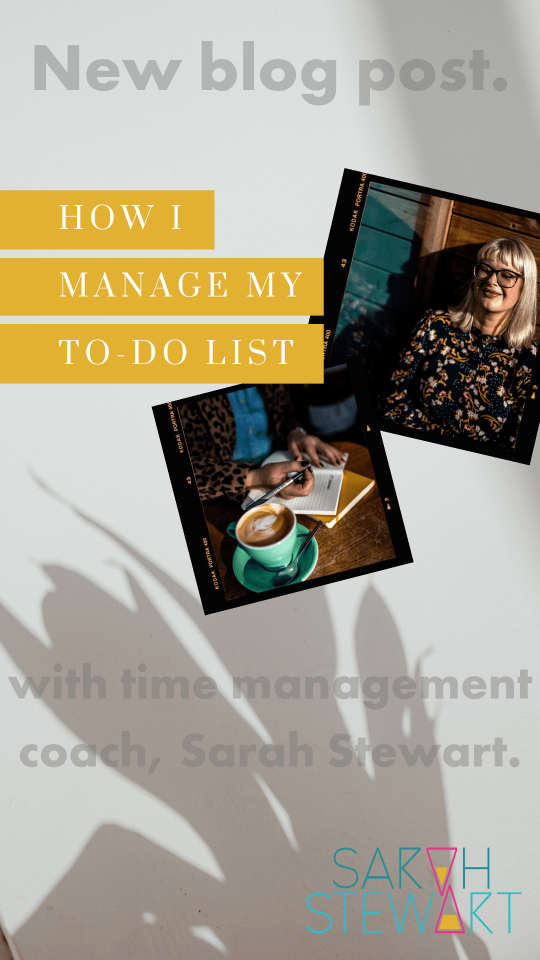How I manage my to-do list
Your brain is a terrible place to keep a list 💣
If you don't already have one, I'd highly recommend starting a to-do list and getting into the habit of using it.
(And if you feel that there’s no saving you from the depths of disorganisation… I’m here to tell you that yes, you can change - - you can learn to be organised and you can create new habits!).
I've tried a variety of different to-do list apps, but I personally don't like having another reason to pick up my mobile phone… so instead, I've been using paper.
Here's the method I use:
I've got two master to-do lists; these are two A5 notebooks that sit on my desk. One is dedicated for personal life and the other for work.
All of the things that I need to do are in these notebooks. It includes ideas for future work projects, that are parked for now, but I don't want to forget them. It includes important emails that I need to send. People that I need to follow-up with. Forms to fill in for the school. Prescriptions to collect, and appointments to make. You get the idea. Having these items in my head can cause overwhelm and makes things feel chaotic, whereas I feel more at ease knowing when something is written down.
Then, when I'm figuring out my plan for the week I will check-in on my to-do list and figure out which items on the list I can achieve in the time that I have available to me.
I can also be strategic with my time… so for instance, if I know I’ve got an errand to run in a particular part of the city, I can check my list to see what else I might achieve whilst I’m there.
It can be really disheartening to put something on your to-do list for a particular day… and at the end of the day having to transcribe it over to the next again day (and likely repeat this, time again!). I'll only put something into my calendar if it’s likely that I'll be able to get it done.
And if I wind up with extra time (if a meeting finishes early for instance), then I will perhaps be able to achieve something additional… or I can take the time to rest.
I do like to keep some whitespace in my schedule, it allows me some flexibility and I can jump on opportunities (such as the Instagram live on time blocking / time mapping that I did recently with Holly Tucker - view it here), and also means if things go awry I can get back on track.
Having my list on paper is great, for me, because I like to physically cross something off my list when I've done it… and I like to see the evidence that I am getting things completed. Having my notebook with lots of items checked off feels good. Whereas with the apps, once you've ticked something as done it tends to disappear.
Some skills to cultivate that help with this - - knowing how to prioritise is important, and it's also important to schedule time for planning (check out the links below).
>>> The power of a weekly check-in
Powerful Question
On to-do lists and prioritisation, I have a new question to share with you which I’ve found really useful (which I think I found in one of Laura Vanderkam’s books) >>>
Before something ends up on your schedule / to-do list… for instance, if you are asked to do something in the future… maybe it’s an invitation for an event or work project that’s happening in May (and we're currently at the start of March).
Your calendar right now for May might look wide open… and so you say yes. But invariably, by the time May hits… your schedule is busy.
So instead, ask yourself if you would do it tomorrow.
Is it something that’s important to you enough that you would re-jig your (busy) day to do it tomorrow?
And consider that before you agree to it.

